Sports-related traumatic dental injuries (TDIs) account for 18–30% of all oral diseases. It is vital that such injuries be treated as soon as possible in order to lessen and prevent complications in the injured patients.

Classification of dental trauma
G.E. Ellis, a pediatric dentist, was the first to propose a standard classification of dental injuries in 1950. The type of dental injuries has been based on a number of variables, including etiology, anatomy, pathology, and treatment concerns.
Ellis classification is a simplified classification, which groups many injuries and allows for subjective interpretation by including broad terms such as simple or extensive fractures.
- Class I – Simple crown fracture with little or no dentin affected
- Class II – Extensive crown fracture with considerable loss of dentin, but pulp not affected.
- Class III – Extensive crown fracture with considerable dentin and pulp exposure/loss.
- Class IV – A tooth devitalized by trauma with or without loss of tooth structure.
- Class V – Teeth lost as a result of trauma.
- Class VI – Root fracture with or without the loss of crown structure.
- Class VII – Displacement of the tooth with neither root nor crown fracture Class VIII – Complete crown fracture and its replacement.
- Class IX – Traumatic injuries of primary teeth.

Treatment Guidelines for Tooth & Alveolar Fractures
Although it is impossible to guarantee that a traumatized tooth will remain in place permanently, prompt treatment with suggested methods can increase the likelihood of success. Variations in a patient's dental health, physical condition, and personal preferences are crucial considerations in deciding the treatment plan. The general considerations for different cases have been described below:
- CROWN FRACTURE
Enamel and dentin fracture without pulp exposure: It is possible to bind a tooth fragment to the tooth if it is accessible. If not, apply a temporary restoration using glass ionomer to cover the exposed dentin or a permanent restoration using a bonding agent and composite resin. Restoration with a standard dental restorative material is the only effective treatment for the fractured crown.
Enamel and dentin fracture with pulp exposure: In order to ensure future root development in young patients with open apices, pulp vitality must be preserved through pulp capping or partial pulpotomy. Additionally, this is also the recommended treatment for individuals with closed apices. Materials suited for such treatments include MTA (white) and calcium hydroxide compounds. It is possible to bind a tooth fragment to the tooth if it is accessible. Restoration using indirect dental restorative materials (veneers/crowns) may be the future course of treatment for the cracked crown.
- CROWN-ROOT FRACTURE
Without pulp exposure: Remove the fragments with or without gingivectomy and then repair them.
With pulpal exposure and immature roots: To maintain pulp vitality when there is pulpal exposure and immature roots, perform a partial pulpotomy.
Pulp exposure with mature roots: Endodontic therapy should be used when there is pulp exposure in mature roots before a post-retained crown is used to restore the tooth. Before a permanent repair, orthodontic or surgical extrusion of the apical fragment may be necessary to reveal the margins. Extraction is unavoidable in crown root fractures with extensive apical extension, the most severe of which is a vertical fracture.
- ALVEOLAR FRACTURE
Any displaced section should be realigned, and the affected teeth should subsequently be protected for four weeks by a flexible splint.If there is a gingival laceration, suture it.
Regular follow-up of these cases is required in order to avoid further trauma-related complications in the future.
Treatment Guidelines for Traumatic injuries i.e Concussion, Subluxation, and Luxation of Teeth
1. CONCUSSION
The tooth is tender to touch and/or percussion but without displacement or abnormal mobility.
- Treatment guidelines:
Immediate treatment: No immediate treatment is needed for concussion of teeth.
Endodontic considerations: The patient should be kept on follow-up and pulpal response should be monitored until a definitive pulpal diagnosis is confirmed.
Follow-up: Clinical and radiographic examinations should be regularly done for up to 5 years.
2. SUBLUXATION
The tooth is tender to touch and percussion and mobile, but not displaced.
- Treatment guidelines:
Immediate treatment: As a part of immediate treatment, stabilization of the affected tooth should be done using a flexible splint for 2 weeks, if needed.
Endodontic considerations: The patient should be kept on follow-up and pulpal response should be monitored until a definitive pulpal diagnosis is confirmed.
Follow-up: The splint should be removed after two weeks and regular clinical and radiological monitoring should be done for up to 5 years.
3. EXTRUSIVE LUXATION
Displacement of the tooth outward or incisally.
- Treatment guidelines:
Immediate treatment: Use saline to rinse the affected area. Gently reposition the tooth putting it back into the socket.
Gingival lacerations should be sutured, especially in the cervical region. The tooth should be stabilized for 2 weeks using a flexible splint.
Endodontic considerations:
Incomplete root formation: Pay particular attention to the pulp's vitality. Pulp revascularization therapy or apexification should be considered if the pulp becomes necrotic.
Complete root formation: Root canal therapy is indicated if the pulp is necrotic.
Follow-up: Splint removal should be done at 2 weeks followed by regular clinical and radiological examinations for up to 5 years.
4. LATERAL LUXATION
Displacement of the tooth in any lateral direction except axially; is usually associated with a fracture of the facial cortical bone.
Immediate treatment: Use saline to rinse the affected area. To release the tooth from its bone lock and gently reposition it into its original position, move the tooth digitally or with forceps. Gingival lacerations should be sutured, especially in the cervical region.
The tooth should be stabilized using a flexible splint for 2-4 weeks.
Endodontic considerations:
Incomplete root formation: Pay particular attention to the pulp's vitality. Pulp revascularization therapy or apexification should be considered if the pulp becomes necrotic.
Complete root formation: Root canal therapy is indicated if the pulp is necrotic.
Follow-up: Splint removal should be done at 2 weeks which can be extended up to 4 weeks in case of severe displacement. This should be followed by regular clinical and radiological examinations for up to 5 years.
5. INTRUSIVE LUXATION
Displacement of the tooth inward and into the alveolar bone.
Immediate treatment:
Incomplete root formation: Allow for re-eruption without any intervention for intrusion which is up to 7mm. This should be done for 3 weeks post-trauma. If no movement is seen during this period, orthodontic extrusion should be initiated.
If the intrusion is >7mm, go for surgical or orthodontic extrusion of the concerned teeth within 3 weeks of trauma.
Complete root formation: Allow for re-eruption without intervention with up to a 3 mm intrusion and the patient is less than the age of 17. If no movement is seen during the period of 3 weeks, orthodontic or surgical extrusion should be initiated.
If the intrusion is between 3 mm to 7mm, go for surgical or orthodontic extrusion of the concerned teeth within 3 weeks of trauma.
If the intrusion is >7mm, reposition the tooth surgically and give a flexible splint for 2 weeks extending up to weeks in case of severe intrusion.
Repair gingival lacerations, particularly those in the cervical region.
Endodontic considerations:
Incomplete root formation: Pay particular attention to the pulp's vitality. Pulp revascularization therapy or apexification should be considered if the pulp becomes necrotic.
Complete root formation: The pulp is likely to become necrotic in such cases and hence root canal treatment should be initiated after 2 weeks of injury. A temporary dressing with calcium hydroxide is recommended for up to 4 weeks after the cleaning and disinfection procedure is completed.
Follow-up: Removal of splint after 2 or 4 weeks as indicated followed by a regular clinical and radiological examination for up to 5 years.
6. AVULSION
Complete displacement of a tooth from its socket in alveolar bone owing to trauma.
An appropriate storage media is recommended for the protection of PDL cells following trauma – the tooth must be kept wet. This includes:
- Hank’s Balanced Salt Solution (HBSS) (GIBCO® HBSS, Biological Industries, Life Tech) – gold standard, can be stored upto 72-96 hours, but not available in most places where these traumatic events usually occur, such as in school, home, camps, and sports field settings.
- Pasteurized milk – readily available, as effective as HBSS but upto 2 hours after which it loses its effectivity.
- ORS salt liquid
- Egg white
- Propolis (bee propolis dietary supplement tablets)
- Saline – effective upto 2 hours, then damaging.
- Coconut water.
Saliva can be considered to be an acceptable short-term storage medium (less than 30 minutes)
The treatment depends on multiple conditions:
—Avulsed Mature Permanent Teeth with Closed Apex—
- If tooth stored in a proper medium & time elapsed is less than 60 minutes:
Immediate treatment: Hold the tooth by the crown and clean the root surface and apical foramen with saline. Administer local anesthesia. Irrigate the socket with saline. Examine the socket for possible fracture and reposition if necessary. Replant the tooth slowly with slight digital pressure. Verify the normal position of the replanted tooth radiographically. Apply a flexible splint for 2-4 weeks.
Repair gingival lacerations, particularly those in the cervical region.
Follow-up: Removal of splint after 2 or 4 weeks as indicated followed by a regular clinical and radiological examination for up to 5 years.
- Time elapsed is more than 60 minutes/not stored in good mediums/dry tooth.
Immediate treatment: same as above
Endodontic considerations: A Root canal treatment can be done before re-implantation or after 7-10 days of re-implantation but before the removal of the splint. Calcium hydroxide should be used as an intracanal medicament for 4 weeks followed by final obturation.
Follow-up: Removal of splint after 2 or 4 weeks as indicated followed by a regular clinical and radiological examination for up to 5 years. Ankylosis is unavoidable after delayed replantation and must be taken into consideration.
—Avulsed Permanent Teeth with Open Apex—
- Tooth stored in a proper medium & time elapsed is less than 60 minutes:
Immediate treatment: Hold the tooth by the crown and clean the root surface and apical foramen with saline. Administer local anesthesia. Irrigate the socket with saline. Examine the socket for possible fracture and reposition if necessary. Replant the tooth slowly with slight digital pressure. Verify the normal position of the replanted tooth radiographically. Apply a flexible splint for 2-4 weeks.
Repair gingival lacerations, particularly those in the cervical region.
Endodontic considerations: For very immature teeth, root canal treatment should be avoided unless there is clinical or radiographic evidence of pulp necrosis.
If pulp necrosis is diagnosed, pulp revascularization or root canal treatment (apexification) may be recommended.
Follow-up: Removal of splint after 2 or 4 weeks as indicated followed by a regular clinical and radiological examination for up to 5 years.
- Time elapsed is more than 60 minutes/not stored in good mediums/dry tooth.
Immediate treatment: Carefully remove necrotic tissue attached to the root using gauze. Administer local anesthesia. Irrigate the socket with saline. Examine the socket for possible fracture and reposition if necessary. Preferably, root canal treatment should be carried out prior to replantation.
Replant the tooth slowly with slight digital pressure. Verify the normal position of the replanted tooth radiographically. Apply a flexible splint for 2-4 weeks.
Repair gingival lacerations, particularly those in the cervical region.
Endodontic considerations: The root canal treatment must be completed prior to replantation. Delayed replantation has a poor long-term prognosis. The periodontal ligament will be necrotic and not expected to heal.
Follow-up: Removal of splint after 4 weeks as indicated followed by a regular clinical and radiological examination for up to 5 years. Ankylosis is unavoidable after delayed replantation and must be taken into consideration.
Patient Instructions:
- Maintain a soft diet for up to 2 weeks.
- Maintain a good oral hygiene by brushing twice a day with a soft bristled toothbrush. Use gentle strokes only.
- Use Chlorhexidine (0.12%) mouthwash twice a day for at least two weeks.
- Avoid contact sports till instructed furthur.
Conclusion:
Complications related to pulp necrosis and ankylosis are the most frequent complications in traumatic dental injuries and the reason for it is delay in seeking proper treatment for most of the patients. Hence, it is of utmost importance that proper dental education programmes be conducted to make people aware about the immediate care and treatment post trauma.
References:
1. Antipovienė A, Narbutaitė J, Virtanen JI. Traumatic Dental Injuries, Treatment, and Complications in Children and Adolescents: A Register-Based Study. Eur J Dent. 2021 Jul;15(3):557-562 .https://www.ncbi.nlm.nih.gov/pmc/articles/PMC8382465/
2. The Treatment of Traumatic Dental Injuries. https://www.aae.org/
3. Andersson L, Andreasen JO, Day P, Heithersay G, Trope M, Diangelis AJ, Kenny DJ, Sigurdsson A, Bourguignon C, Flores MT, Hicks ML, Lenzi AR, Malmgren B, Moule AJ, Tsukiboshi M; International Association of Dental Traumatology. International Association of Dental Traumatology guidelines for the management of traumatic dental injuries: 2. Avulsion of permanent teeth. Dent Traumatol. 2012 Apr;28(2):88-96. https://onlinelibrary.wiley.com/doi/full/10.1111/edt.12573
4. Is Khinda V, Kaur G, S Brar G, Kallar S, Khurana H. Clinical and Practical Implications of Storage Media used for Tooth Avulsion. Int J Clin Pediatr Dent. 2017 Apr-Jun;10(2):158-165. https://www.ncbi.nlm.nih.gov/pmc/articles/PMC5571385/





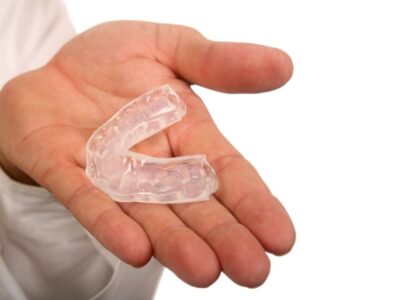
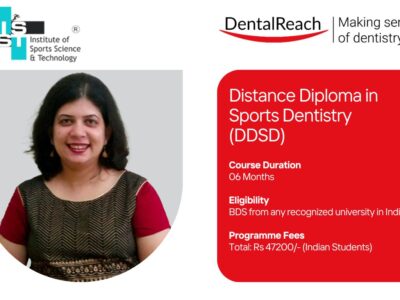
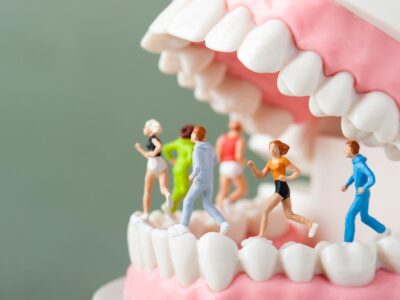

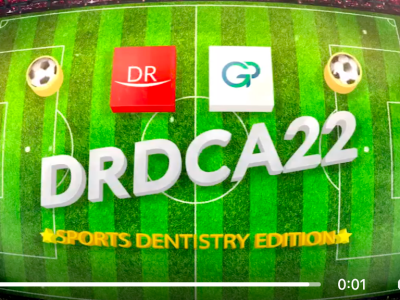
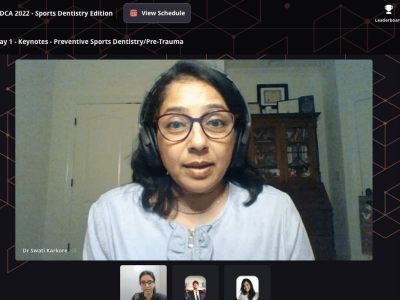









Comments